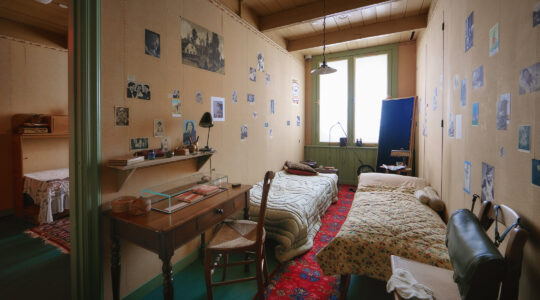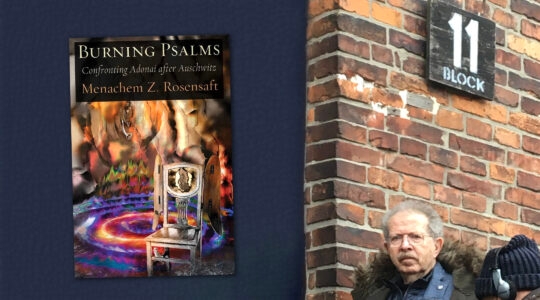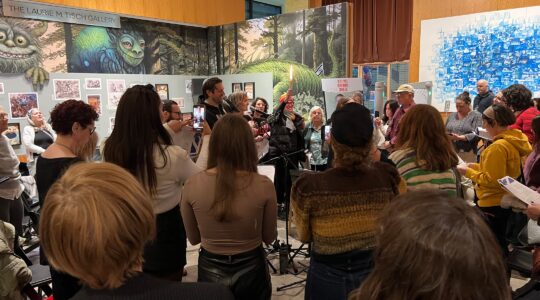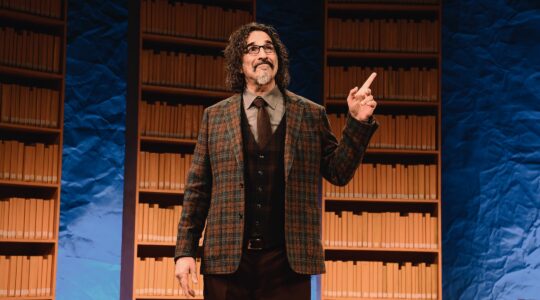Rabbi Steve Shaw, one of the most creative and influential Jewish communal leaders of the last five decades, died of a heart attack on Sunday in Riverdale, where he lived. He was 76.
He was remembered this week by colleagues, friends and relatives as a visionary, often ahead of his time in focusing on concerns like the environment, advocating for more communal funding for Jewish education and the rights of the Bedouin community of Israel.
Peter Geffen, a friend and founder of the Abraham Joshua Heschel School, said Rabbi Shaw’s “originality brought people together who might have never known of each other’s existence.”
The Radius Institute, which Rabbi Shaw founded and which flourished in the 1970s and ’80s, was “an American salon where ideas could be exchanged in person; obvious on the one hand, yet almost unprecedented on the other.”
An intellectual matchmaker, the rabbi introduced and connected Jewish activists and thought leaders with organizational professionals and philanthropists, and with academics outside the Jewish community.
“He had a genius for unusual juxtapositions of people,” said David Szonyi, a longtime friend and Jewish community activist.
Rabbi Shaw once arranged a meeting in New York between Rabbi Steinsaltz, the Israeli Talmudic scholar, with the filmmaker Woody Allen.
Gary Rosenblatt, a friend and Jewish Week’s editor-at-large, recalled that Rabbi Shaw told him it was a less than successful encounter. “Steve said that Rabbi Steinsaltz was funnier than Woody Allen, who kept asking the rabbi, ‘Do you just read that book [the Talmud] all day?’”
Rabbi Michael Paley, a friend and former scholar in residence of UJA-Federation of New York, said: “He cared about the world, its humans, its Jews, its animals. He’s the one that brought me to JTS (the Jewish Theological Seminary, where Rabbi Paley was ordained) and all of those dialogues he arranged with environmentalists, religious leaders and avant-garde thinkers. I miss him already.”
“He was not a typical rabbi. He could relate to Jews across the continuum,” said Rabbi Shaw’s sister-in-law, Wendy Levin-Shaw. She described him as an early practitioner of outreach. “He was very interested in bringing ‘marginal Jews’ back to the tradition.”
While such outreach is often associated with Orthodox Judaism, Rabbi Shaw was Conservative, ordained by JTS, where he later helped develop a successful program for rabbis to discuss the difficult issues they deal with in their work.
A longtime urban dweller, he loved spending time in the outdoors, and though he lived alone, he had a wide range of friends and was known for hosting large Shabbat meals and Passover seders.
As a rabbinical student at JTS, Rabbi Shaw helped organize the now-famous student protest at the 1969 General Assembly in Boston of the Council of Jewish Federations (now the Jewish Federations of North America). The students called for more funding for Jewish education, a radical idea at a time when many communal dollars went to Jewish hospitals.
Briefly a pulpit rabbi in Rutherford, N.J., and associate Hillel director at Rutgers University, over the years he was associated with several Jewish organizations, including the Jewish Theological Seminary, the 92nd Street Y, the Radius Institute at the CUNY Graduate Center, and the National Jewish Conference Center, which he founded with Elie Wiesel and Rabbi Irving “Yitz” Greenberg. It later became CLAL – The National Jewish Center for Learning and Leadership.
“He was really interested in helping the Jewish world, and the world at large,” says William Jaffe, a cousin of the rabbi.
Rabbi Shaw, who had majored in philosophy and forestry in college, was an early proponent of the environmental movement and its roots in Jewish tradition. An avid bird watcher, he would take friends on nature walks and lead ecology-minded exercises during Jewish retreats and conferences. At the rabbi’s funeral on Tuesday at the Hebrew Institute of Riverdale, his longtime friend John Ruskay, executive vice president emeritus of UJA-Federation, recalled how Rabbi Shaw would take Camp Ramah campers on nature tours on Shabbat and that they “would return to their bunks, eyes open — in awe of God’s creations. They were seeing a part of the world as they have never experienced it — and they were understandably fascinated with this rather uncommon rabbinical student and botanist.”
Peter Geffen credited Rabbi Shaw with being “the catalyst” for bringing together various parts of the Jewish community, and for encouraging philanthropists to take an active, hands-on role in the projects they supported. “He created a structure for people to think openly about what will be the future of our lives.”
The rabbi is survived by two brothers, Edward and Philip, four nephews and one niece.
“We” — the circle of friends and associates that Rabbi Shaw influenced — “are his legacy. We are all his ‘children,” Geffen said — “all the work that we have done.”
The New York Jewish Week brings you the stories behind the headlines, keeping you connected to Jewish life in New York. Help sustain the reporting you trust by donating today.




